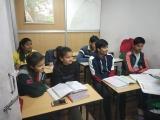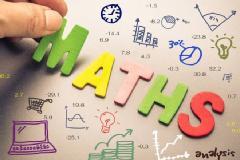Full syllabus Coverage with individual attention
Focus on NCERT Solving, doubt solving technique and Concept Building approach
Join free trial classes
Target 95+ for Physics Batch For CBSE Students
Individual attention.
One to one Doubt Solving exercise.
Topic wise Worksheet and daily practice problems
Weekly test. Chapter wise test
Full syllabus test based on Latest CBSE Pattern
Join free trial Class and feel the difference.
CBSE Class 12 Physics Important Topics Chapter Wise
The following are the comprehensive details about important derivations and topics that may be asked in the CBSE Class 12 Physics board exam 2022. But before moving toward the important topics, let’s check the unit-wise marks distribution for better clarity.
UNIT 1: Electrostatics
Chapter 1 – Electronic Charges and Field
Coulomb’s Law of Vector
Forces between multiple charges electric field due to system of charges
Electric dipole in the external electric field
Electric dipole’s electric field on the axial and equatorial point
Gauss’s law of applications
Chapter 2 – Electrostatic Potential and Capacitance
Equipotential surfaces
Potential due to electric dipole and system of charges
Electric potential energy due to electric dipole and system of charges
Effect of dielectric on capacitors
Energy stored in capacitors
Combinations of capacitors
Chapter 3: Current Electricity
Ohm’s Law
Limitations of ohm’s law
Combination of resistors
Combination of cells
The resistivity of different materials
Meter bridge
Kirchhoff’s law (Definitions and Numericals)
Potentiometer
UNIT 3: Magnetic Effects of Current and Magnetism
This unit of the CBSE Class 12 Physics NCERT textbook involves two chapters. These chapters are titled Moving Charges and Magnetism and Magnetism and Matter.
Chapter 4: Moving Charges and Magnetism
Motion in a magnetic field
Magnetic force on current-carrying wire (Theory and Derivation)
Magnetic-field on the axis of the circular current-carrying loop
Cyclotron (Diagram, Theory and Derivation)
Velocity selector
The force between two parallel current-carrying wires
Ampere’s circuital law
Torque on current-carrying loop in a magnetic field
Moving coil galvanometer
Chapter 5: Magnetism and Matter
Electric dipole in a uniform magnetic field
The axial magnetic field of a bar magnet as solenoid
Hysteresis Loop
Diamagnetic, Paramagnetic, Ferromagnetic Substances
Chapter 6: Electromagnetic Induction
Lens law
Magnetic flux
Motional EMF
Faraday’s law of induction
Self-inductance and mutual inductance
Chapter 7: Alternating Current
RC, LC, LR and LCR Circuits (Numericals and Derivation)
LC oscillations (Numericals and Derivation)
Power factor
Transformers
UNIT 5: Electromagnetic waves
This unit contains only one chapter, Electromagnetic waves. This chapter’s key topics and derivations are listed below:
EM waves
Displacement Current
Nature of em waves
UNIT 6: Optics
This unit is divided into two chapters. This chapter is titled Ray Optics and Optical Instruments & Wave Optics. These are some of the most important topics covered in this chapter:
Chapter 9 – Ray Optics and Optical Instruments
Image formation by spherical mirrors
Image formation by spherical lenses
Power and combination of lenses
Total internal reflection
Natural phenomenon due to light (Definition and Numericals)
Refraction through a Prism (Ray diagram, Numericals and Derivation)
Eye
Microscope
Telescope
Chapter 10 – Wave optics
Incoherent and coherent waves addition
Reflection and refraction of plane waves using Huygen principle
Interference and Young’s double-slit experiment
Diffraction of light
Polarisation by scattering
Resolving power of optical Instruments
UNIT 7: Radiation and Matter Have a Dual Nature
This unit contains only one chapter. The chapter is titled Dual Nature of Matter and Radiation. These are some of the most important topics covered in this chapter:
Chapter 11 – Dual Nature of Radiation and Matter
Photoelectric effect
de Broglie hypothesis
Davisson and Germer experiment
Einstein photoelectric equation
UNIT 8: Atoms and Nuclei
This unit is divided into two chapters. Atoms and Nuclei are the titles of these chapters. This chapter’s key topics and derivations are listed below:
Chapter 12 – Atoms
Atomic spectra
Electron Orbits
de-Broglie explanation of Bohr’s postulate
Bohr Model of a Hydrogen atom
Line spectra of a Hydrogen atom
Chapter 13: Nuclei
Nuclear binding energy (Definition and Numericals)
Radioactivity
Radioactive decays
UNIT 9: Electronic Devices
This unit contains only one chapter. Semiconductor Electronics: Materials, Devices, and Simple Circuits is the title of this chapter. These are some of the most important topics covered in this chapter:
Chapter 14: Semiconductor Electronics: Materials, Devices and Simple Circuits
Intrinsic semiconductors
Extrinsic semiconductors
p-n Junction diode
p-n Junction in reverse bias and forward bias
n-p-n and p-n-p transistor
Junction diode as a rectifier
Zener diode as a voltage regulator
Transistor as an amplifier
Logic gates















